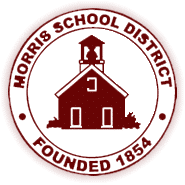Lightspeed Systems® and Digital Promise have joined forces to provide participating Digital Promise League of Innovative School Districts a better way to track and monitor student-level digital engagement: the use of Lightspeed Digital Insight™. This award-winning data analytics tool enables schools to analyze the efficacy of their technology investments and identify those students at risk of falling through the cracks—all in real time.
Seven districts varying in size participated in the project, including New Jersey’s Morris Public School (MPS). This profile outlines the Morris team’s initial objectives at the beginning of the program and the insights they gleaned after seeing and reviewing their application usage and engagement data.
Using Data To Assess ROI
Like many school districts across the country, determining the cost per user of EdTech investments is critical to informing MPS’s renewal and purchasing strategies. It has been difficult to calculate this amount without knowing the extent to which their paid applications and digital programs were being used by their students, especially this past year. At the onset of the project, the MPS team immediately began using Lightspeed Digital Insight to track application usage data across the district and identify which applications were being used and how often. Leveraging this data, they quickly learned which investments have been paying off for the district.
We have a learning management system that costs us a lot of money, but I can see it is being used a lot. I’m also really proud that all of our trending applications are approved by our Director of Curriculum and Instruction.
Identifying Professional Development Best Practices
The team is also using the actionable data generated to identify professional development best practices and opportunities. For example, this past year the district rolled out a program called Gizmos to its science teachers because they needed a way to conduct online labs for their virtual students. Much to the Morris team’s delight, they saw that the program was in their Top 20 Trending Applications list within the platform. Lightspeed Digital Insight helped to validate their technology investments.
“From a curricular lens, we are making decisions based on need and support both for teachers and students,” said Brian Young, our Director of Curriculum and Instruction. “For us, it’s not just a monetary investment in the platform itself. With Gizmos, for example, we hosted and paid for several professional development sessions. Looking at the usage data reaffirms that we are making effective decisions, and it shows me how valuable our teachers find that particular program for online science, investigation, and inquiry.”
Lightspeed Digital Insight’s application usage data also prompted Young and Hartman to closely examine what made the Gizmos deployment so successful and strategize how they can replicate its success. “It is very reassuring to see that we are getting our return on investment on not only the technology itself but also the trainings we do to enable our teachers,” said Hartman.
Tracking, Measuring, And Analyzing Student Engagement
Tracking and gaining a better understanding of student engagement in a digital learning environment has been another priority for MPS. Throughout the project, the MPS team reviewed their student engagement data to identify how often students were engaging with their digital tools, the time of day and days of the week students were engaging with their digital tools, and the duration of each engagement. Having insight into their application usage and engagement data also enabled Morris’s team to identify apps with higher-than-expected engagements and then pinpoint professional development needs.
When we see excitement around a platform in the form of usage data, we should build upon that. Let’s improve the learning process even more by leveraging an asset-driven professional development approach.

Digital Promise works at the intersection of education leaders, researchers, and technology developers to improve learning opportunities for all and close the Digital Learning Gap. Because when all learners have equitable access to technology, when everyone participates, and when everyone learns, we all benefit from a more engaged, informed and just society.

